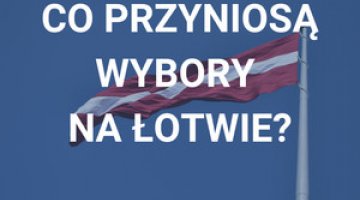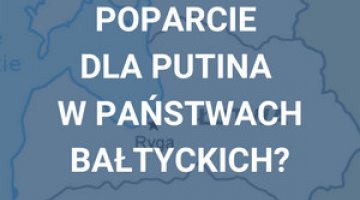Analyses
Latvia: Russians win the election but have no guarantee of entering the government
The Harmony Centre, a left-wing grouping which represents the interests of the Russian minority, won the early election in Latvia for the first time on 17 September. The party gained 31 of the 100 seats in the Saeima, Latvia’s parliament. The second best result (22 seats) was achieved by the newly created Reform Party led by the former president, Valdis Zatlers, who in May this year, shortly before the expiry of his tenure, accused the Saeima of failing to counteract corruption and of reinforcing the oligarch rule, and then ordered referendum be held in which Latvians decided to dissolve parliament which had been operating for less than a year. Another 20 seats were won by the centre-right grouping, Unity, led by Prime Minister Valdis Dombrovskis, which supports Zatlers in his actions. This election was successful for Latvian nationalists from the alliance All for Latvia, who increased the number of their parliamentary seats from 8 to 14. The Union of Greens and Farmers (13 seats), linked to Aivars Lembergs, mayor of Ventspils, was the only grouping representing the interests of an oligarch to enter parliament. The key issue in the coalition negotiations is the continuation of the government’s savings policy. However, the attitude to minority rights and Latvia’s 20th century history are also important. Only when the parliamentary majority is formed, will President Andris Bērziņš indicate the candidate for prime minister.
Commentary
- Despite having won the election, the Harmony Centre has little chance of finding partners to form a government with. The centre-right groupings, namely Zatlers’s Reform Party and Unity, have the greater capability of forming a coalition. Although the Harmony Centre has mitigated its pro-Russian rhetoric and has been making efforts to find consensus on the interpretation of history (especially the Soviet occupation of Latvia) with the centre-right parties, it is still a grouping which ethnic Latvians do not trust. This party would be a difficult partner in the continuation of the commenced economic reforms, as it is opposing for example Latvia’s accession to the eurozone in 2014, which is one of the key goals for the parties led by Zatlers and Dombrovskis.
- An alternative to the participation of the Harmony Centre in the government, and the most likely scenario at present, is the formation of a coalition of the centre-right parties led by Zatlers and Dombrovskis with the nationalists from the All for Latvia bloc (a total of 56 seats). This coalition would however be encumbered with the nationalists’ rigid rhetoric, which could lead to tension between the Russian minority and the government and thus adversely affect Latvian-Russian relations. This could be used by Moscow to continue accusing Latvia of human rights violation in the international arena. If conflicts over national issues escalate, the parties led by Zatlers and Dombrovskis wishing to maintain parliamentary majority would be able to start co-operation with the grouping linked to Lembergs, the oligarch. However, this move would be troublesome for the centre-right, which was building support among its electorate on opposing the participation of oligarchs in governing the country. They could also consider inviting the Harmony Centre to the coalition.
- The Harmony Centre staying outside the government coalition will be a problem to a centre-right government. This grouping represents 35% of Latvia’s citizens, who will be dissatisfied with the fact that they could be isolated once more in parliament by Latvian groupings, this time in the face of the party’s victory in the election (the Harmony Centre received a similar level of support and achieved the second best result in the election in 2010).




